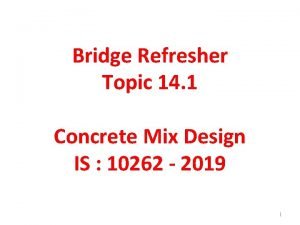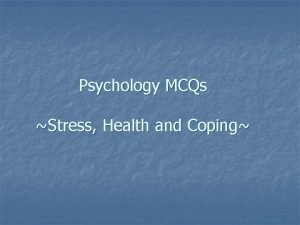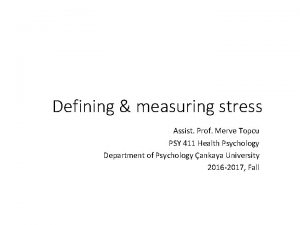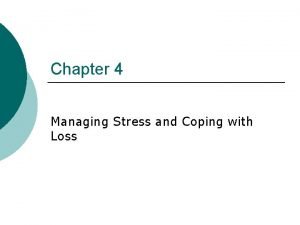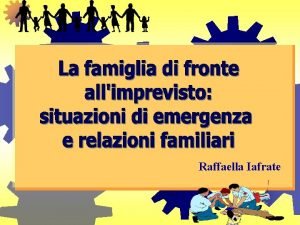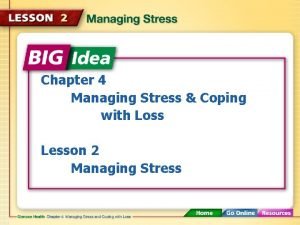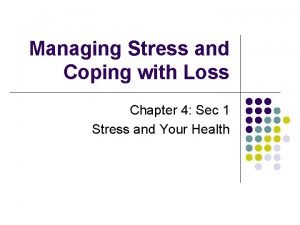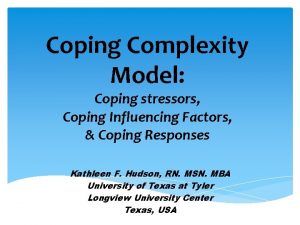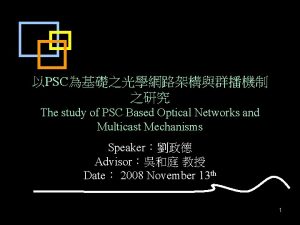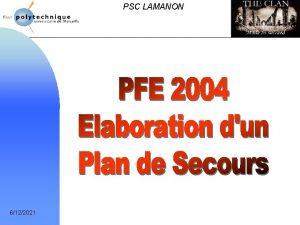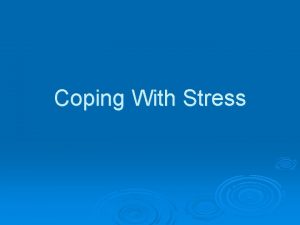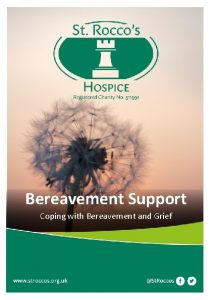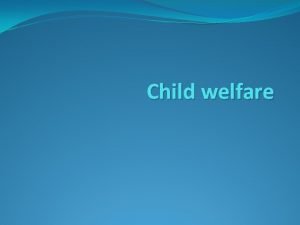PSC and Your Child Coping with PSC Coping













- Slides: 13

PSC and Your Child

Coping with PSC

Coping with PSC • Depends on age but “knowledge is power”. Understanding what is needed demystifies and allows for increased control. • If the patient is symptomatic, it entails visits and hospital care and medication treatment and surgeries • A child with PSC often minimally symptomatic and it is hard to keep focus on a “silent” disease • Fear can paralyze

Children are both Fragile and Resilient – Beginning at about ages 10 to 12, children begin to grasp the complex ways that things can cause or be a factor in a disease or disability. Some are more mature than others. Most want to have their “life” back – Every year check out what the child understands about the illness or disability, medications, limitations, and outcome.

Listen. Inform yourself and your child. Seek others with similar conditions. Allow for ownership creating order, discipline and control

One Form of Independence • Basic Self Cares: cooking, laundry, etc • Education • Employment • Finances, budgets • Transportation • Housing • Healthcare

PSC related • Knowledge of condition, Past Medical History Diagnosis, Dates of events • Medications Names, purpose, dosage, allergies • Insurance Consequences of changes in coverage • Self advocacy Who to contact, when, why • Lifestyle choices Consequences different from peers

Post liver Transplant • Consequences of mistakes can be catastrophic • Rejection and graft loss high in this age group (due to transition or just due to age related behaviors is unknown)

Transition and Coping 1. 2. 3. 4. 5. 6. Knowledge of medications Adherence Independence/self-responsibility Decision-making capability Knowledge of medical condition Appointment scheduling Lerret,

Barriers to transition 1. 2. 3. 4. Immature patient Developmental variation Parent uncomfortable with independence Parent unable to let go

Additional barriers 6. Insurance issues (including lack of coverage for dual visits) 7. Adult providers not willing/able to accept pediatric LT recipients 8. Physical location of adult provider/ new medical system 9. Pediatric provider: Lack of time to address, difficult to identify adult provider, difficult to cut ties with patients/families 10. Adult provider: lack of time to address, poor communication from pediatric provider, different medical record system, inadequate knowledge of “pediatric” diseases

Structure of Transition 1. 2. 3. 4. 5. Structure of outpatient appts, identified liaison person Parent-free portions to appts through adolescence Peer support groups Education sessions over time Take into account gender, individual circumstances, location of adult post-transfer medical provider

Key Points 1. 2. 3. 4. 5. Transitioning patients to adult care is a PROCESS The process should be started YEARS before transfer And continues AFTER transfer Use RESOURCES available Recognize process must be INDIVIDUALIZED for maximum success
 Left child right child tree representation
Left child right child tree representation Concrete mix ratio table
Concrete mix ratio table Give us your hungry your tired your poor
Give us your hungry your tired your poor Chapter 4 managing stress and coping with loss notes
Chapter 4 managing stress and coping with loss notes Chapter 4 lesson 3 coping with loss and grief
Chapter 4 lesson 3 coping with loss and grief Stress management mcqs
Stress management mcqs Stress appraisal and coping
Stress appraisal and coping Chapter 4 managing stress and coping with loss lesson 1
Chapter 4 managing stress and coping with loss lesson 1 Family stress and coping
Family stress and coping Chapter 4 lesson 2 managing stress
Chapter 4 lesson 2 managing stress Abrafile
Abrafile Chapter 4 managing stress and coping with loss
Chapter 4 managing stress and coping with loss Psc tracker
Psc tracker Psc-cuny welfare fund retirees
Psc-cuny welfare fund retirees

